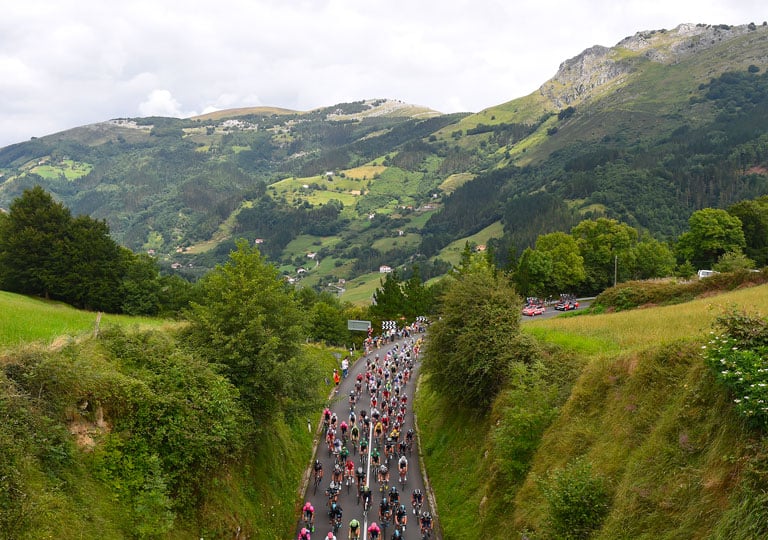
CLÁSICA SAN SEBASTIÁN
The Basque race is the youngest of the prestigious one-day road cycling races and the most important one-day race in Spanish professional road cycling.
THE HISTORY
The Clásica de San Sebastián was created by Jaime Ugarte, a cycling journalist of the Spanish newspaper Diario Vasco and founder/chief of Organizaciones Deportivas Diario Vasco. In 1981, he won the elections to lead the Guipuzcoan Cycling Federation, and one of his first tasks as president was revitalize the track, and the creation of an important race for San Sebastián. Along with his friends and colleagues, José Mari Eceiza and the Ayestarán brothers, they devised the idea of a professional race to inspire amateurs and fans, a classic cycling race like Paris-Roubaix, Milan-Sanremo, Liège-Bastogne-Liège. They designed a race between San Sebastián and Bilbao, but several reasons impeded this, so they decided to focus on Gipuzkoa, where the mountain pass Jaizkibel was located. Helped by UCI president Luis Puig, they placed the race in the highest steps of world cycling.
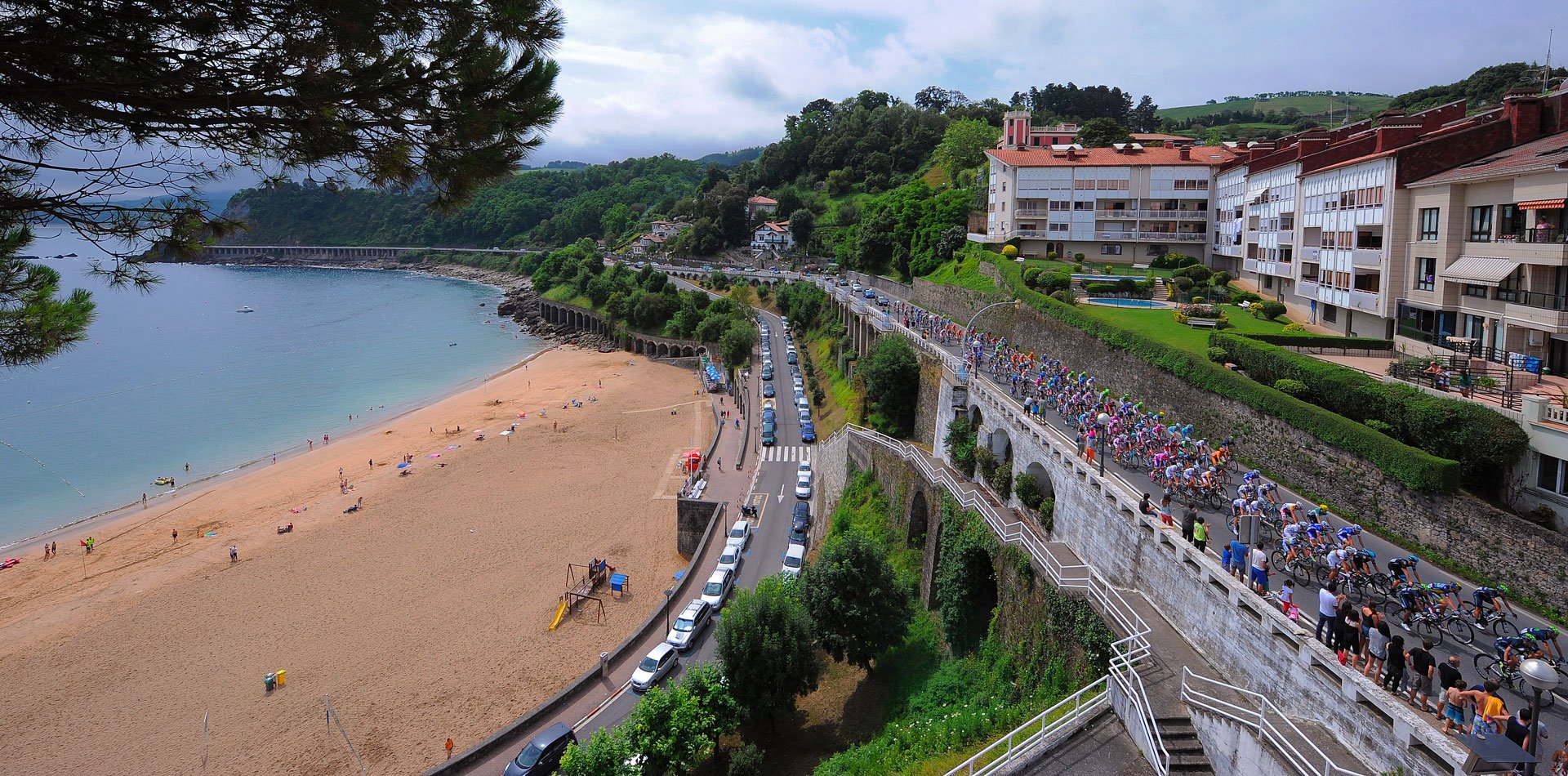
In the first edition, right from the start, the race proved to be extremely tough. Of the 71 riders who took the start, only 30 were able to reach the finish line, on a very hot day and with a huge number of spectators watching the race. The ascent of the five passes that marked the route caused havoc in the peloton. The race was relatively calm until the Jaizkibel (which with Azcárate, Karabieta, Udana and Alto de Orio) formed the quintet of great difficulties. There, Marino Lejarreta took off and marched alone towards the finish line.
He managed to win again the following year, attacking the rest of the chasing group in Jaizkibel, and reaching Pedro Delgado and Jesús Rodríguez Magro in the breakaway, managing to beat them in the final sprint. He would go on to repeat the feat in 1987.
The history of the race tells that the home riders dominated it far and wide with 6 wins, 9 seconds and 6 third places but also the Italians were not far behind with 6 wins, 7 seconds and 11 third places.
The athletes who can say they have won it more than once are, in addition to Marino Lejarreta, Francesco Casagrande and Laurent Jalabert. In the roll of honor of the race there are also the classic cycle race hunters Adri Van der Poel and Davide Rebellin and the former world champions Paolo Bettini, Claude Criquielion, Gianni Bugno and the immense Miguel Indurain.
Gianni Bugno is the first Italian in the roll of honor: he won in San Sebastian on August 10th 1991.
He managed to win again the following year, attacking the rest of the chasing group in Jaizkibel, and reaching Pedro Delgado and Jesús Rodríguez Magro in the breakaway, managing to beat them in the final sprint. He would go on to repeat the feat in 1987.
The history of the race tells that the home riders dominated it far and wide with 6 wins, 9 seconds and 6 third places but also the Italians were not far behind with 6 wins, 7 seconds and 11 third places.
The athletes who can say they have won it more than once are, in addition to Marino Lejarreta, Francesco Casagrande and Laurent Jalabert. In the roll of honor of the race there are also the classic cycle race hunters Adri Van der Poel and Davide Rebellin and the former world champions Paolo Bettini, Claude Criquielion, Gianni Bugno and the immense Miguel Indurain.
Gianni Bugno is the first Italian in the roll of honor: he won in San Sebastian on August 10th 1991.
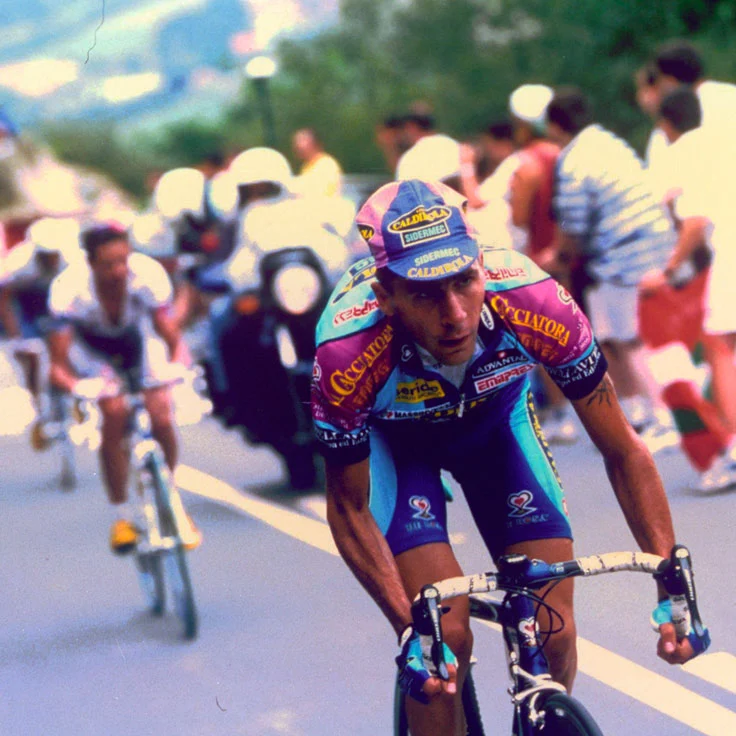
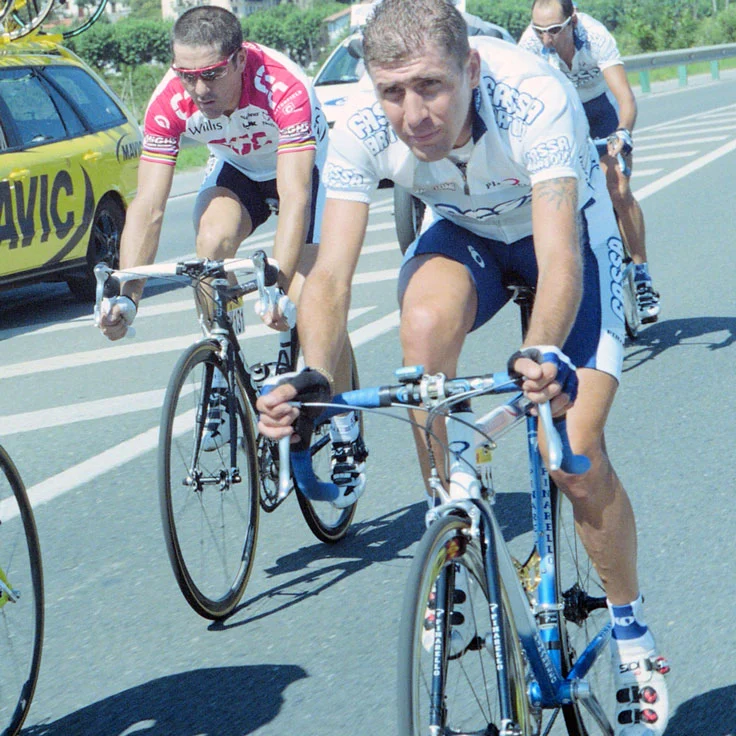
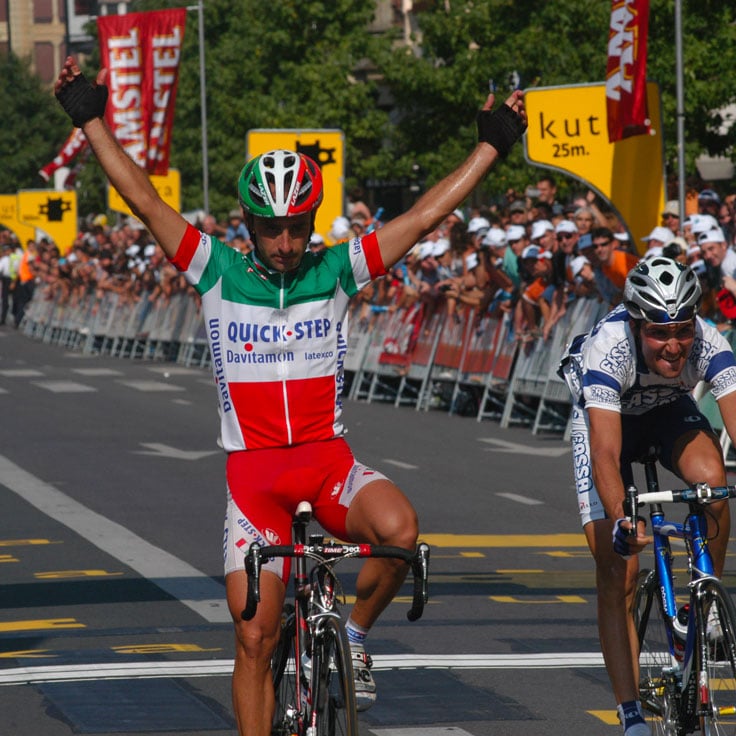
On August 1st 2015, Adam Yates took his biggest victory to date by winning the Clásica de San Sebastián after attacking on the final climb as leader Greg Van Avermaet of BMC Racing Team was involved in a crash with a race motorcycle, and holding off the chasers on the descent into San Sebastián. In the confusion after Van Avermaet's crash Yates did not realise he had won, so did not initially celebrate when crossing the finishing line.
On August 3rd 2019, Remco Evenepoel, in his first year as a professional, scored his first World Tour victory when he won the Clasica de San Sebastian. He escaped from the peloton, accompanied by Toms Skujinš about 20 km from the finish, dropping his companion on the last hill and soloing to victory. He became the third youngest rider to win a classic.
On August 3rd 2019, Remco Evenepoel, in his first year as a professional, scored his first World Tour victory when he won the Clasica de San Sebastian. He escaped from the peloton, accompanied by Toms Skujinš about 20 km from the finish, dropping his companion on the last hill and soloing to victory. He became the third youngest rider to win a classic.
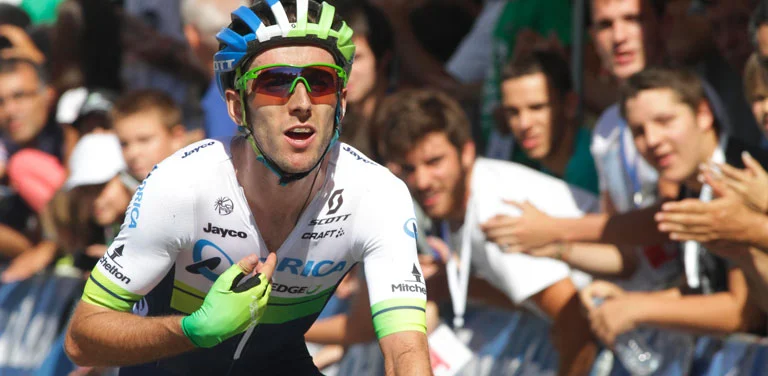
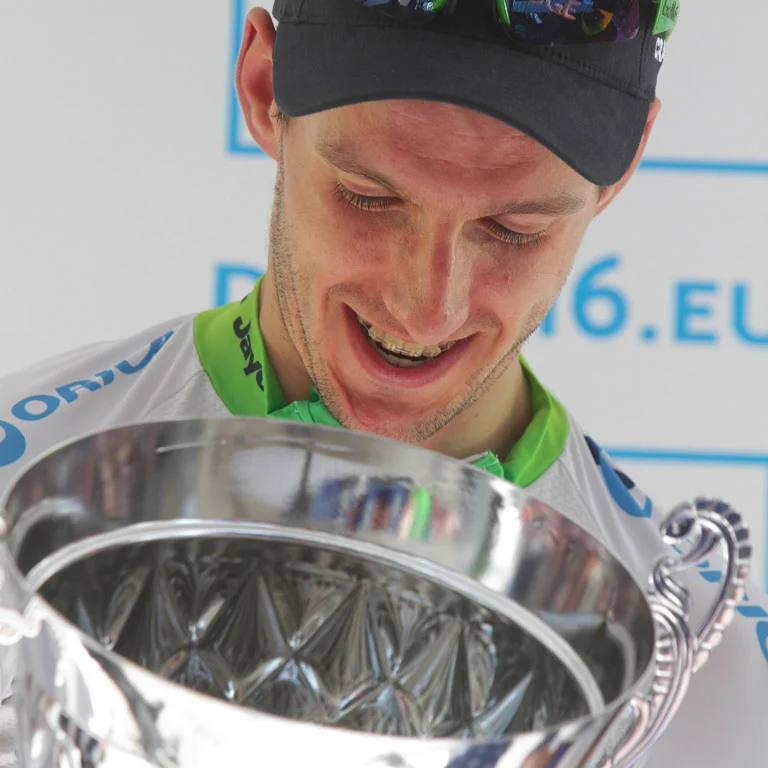
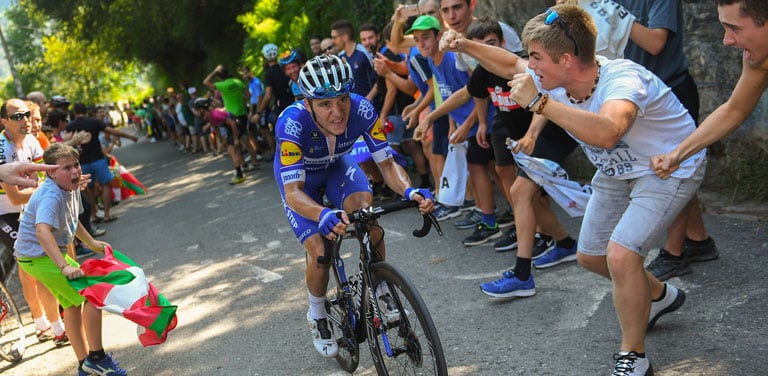
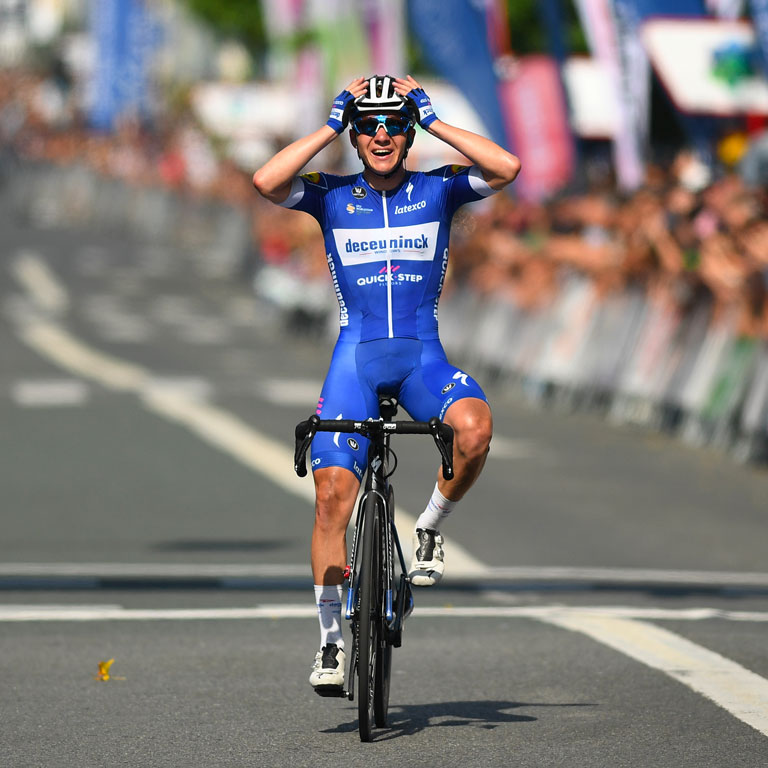
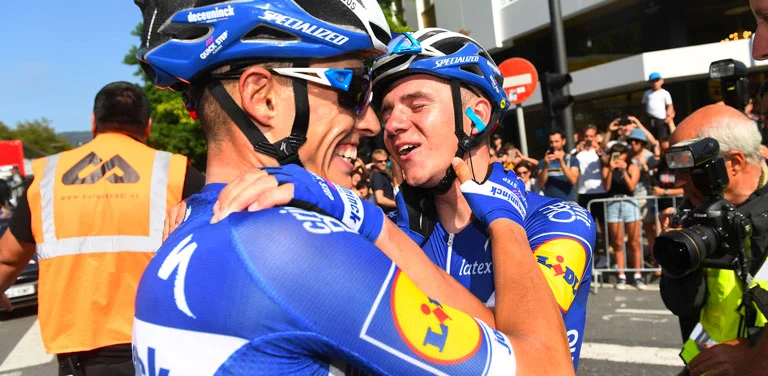
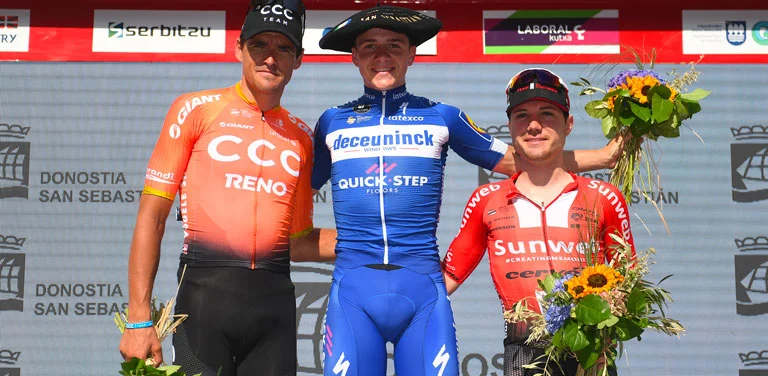
On July 30th 2022, thanks to the extraordinary work of the Quick-Step Alpha Vinyl Team, Remco repeated the feat. It was a solo victory after a breakaway that started on the penultimate climb 45 km from the finish, which knocked out also Simon Yates, the only one who had tried to resist.
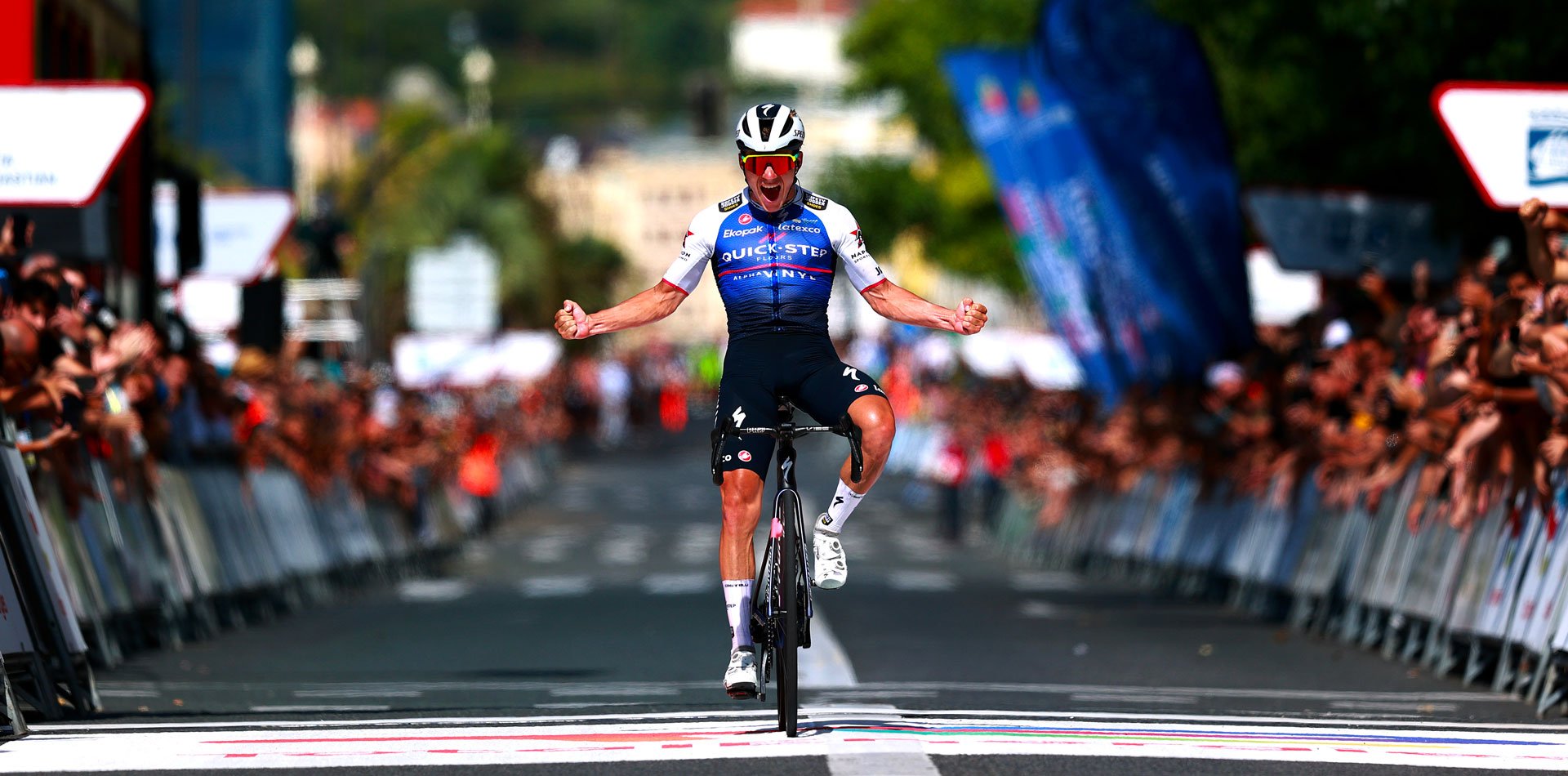
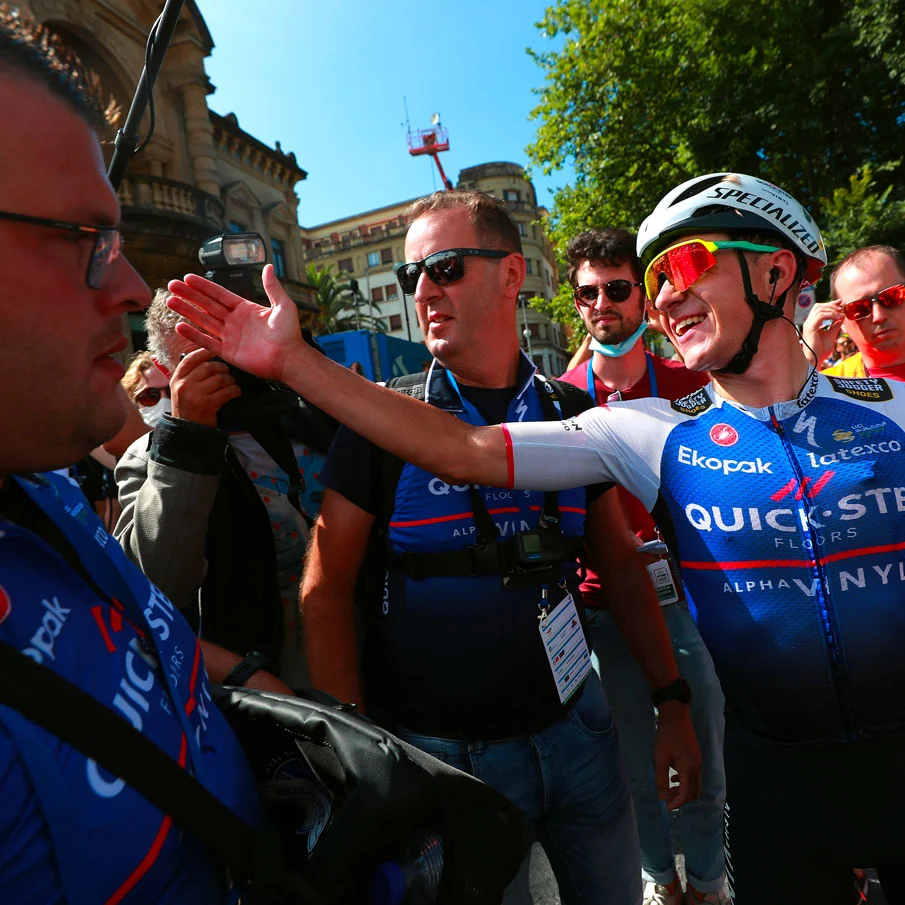
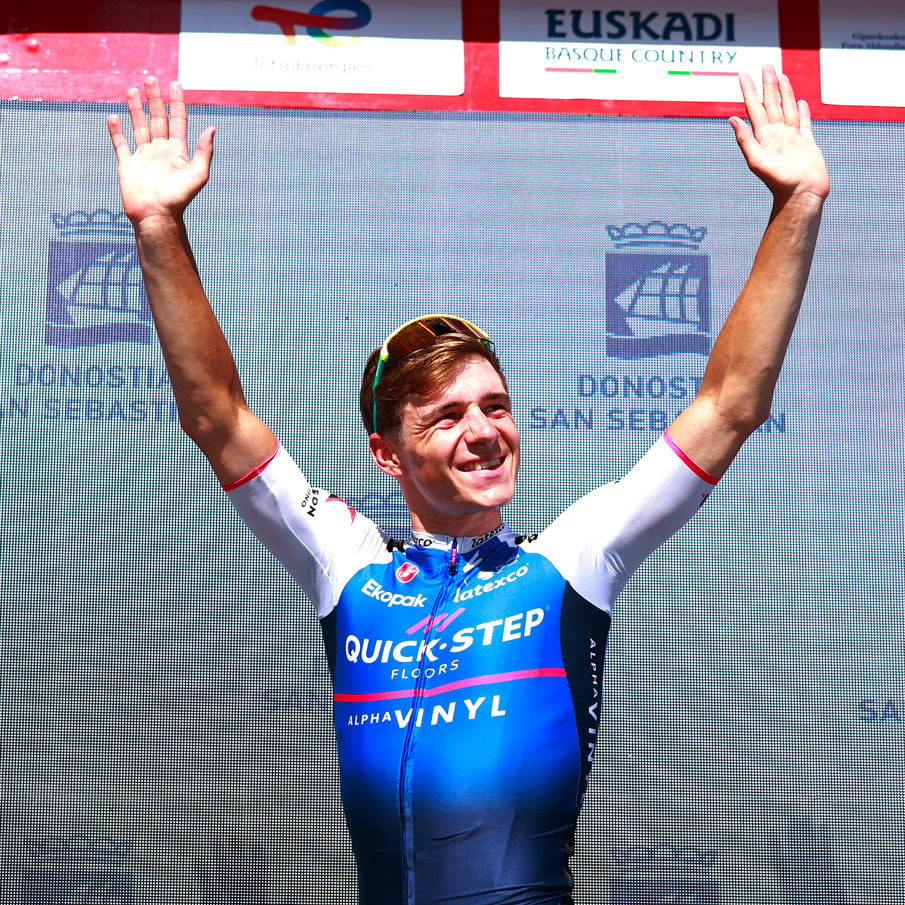
THE ROUTE
It has always started and finished in San Sebastian and the initial and intermediate section has been variable in all its editions so its total mileage has not been the same although it has almost always been around 230 km. Its maximum difficulty is the top of Jaizquíbel (classified as 1st category) located in the first editions about 15 km from the finish, although with progressive changes it has been moving away from the finish. Thus in those first editions it was climbed on the Fuenterrabía slope until, in order to offer other alternatives, giving the opportunity to other types of riders and not favoring so much the climbers, it was decided to climb the opposite slope of Pasajes to place the pass at about 30 km from the finish.
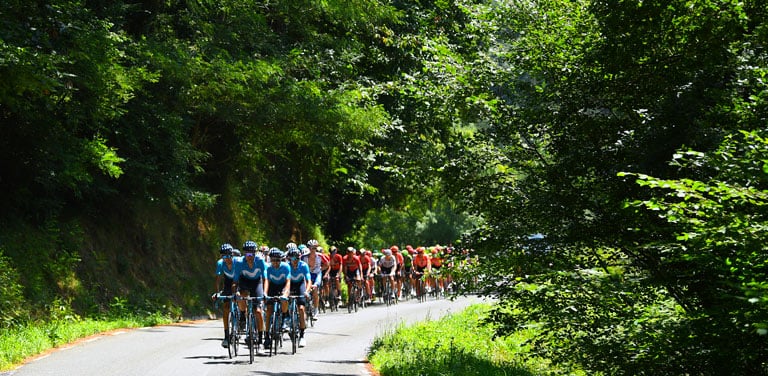
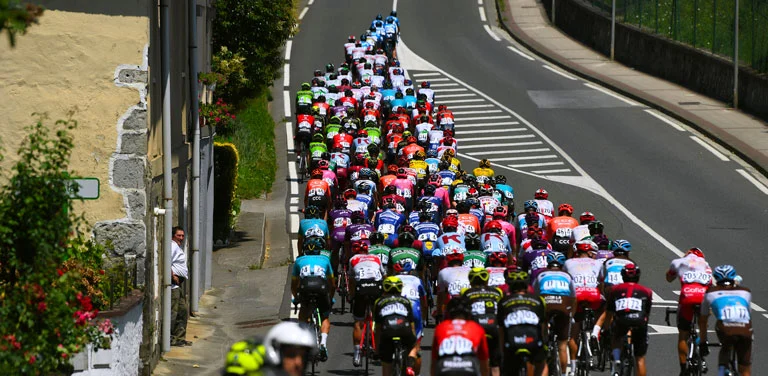
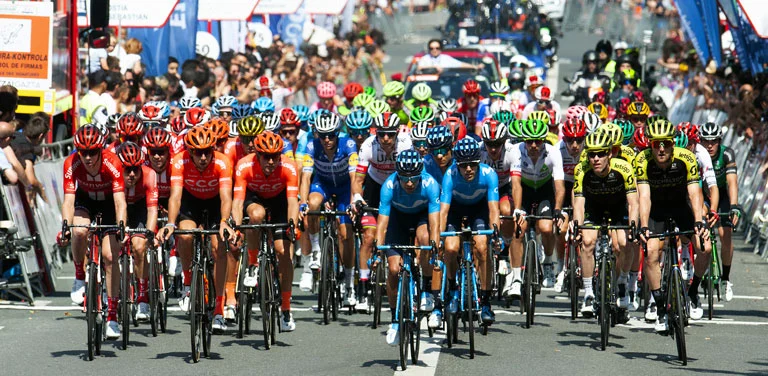
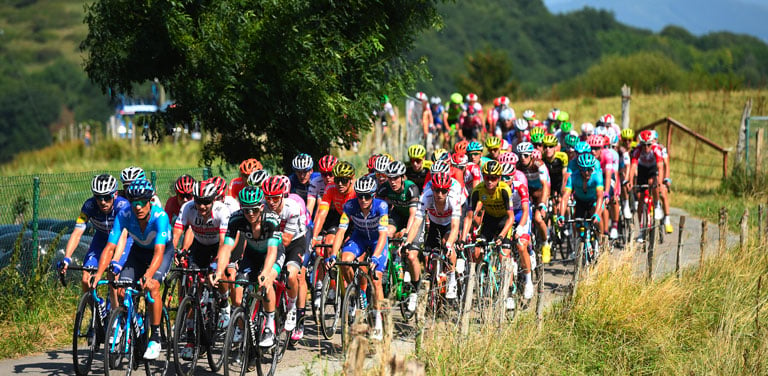
Over the years the organizers have added climbs to complicate the race, as the riders' level has generally improved, making it more of a climbers classic.
In 2001, the Gurutze pass (classified as 3rd category) was included replacing the Gaintzurizketa pass and leaving Jaizkibel 32 km from the finish.
In 2008 Gurutze was replaced by Gaintzurizketa+Arkale (catalogued as 2nd category) placing Jaizkibel at 38.5 km from the finish.
Then, in 2010, a circuit was added repeating twice the hard part of the race (Jaizkibel and Gaintzurizketa+Arkale).
Finally, in 2014, another circuit was introduced inside San Sebastian passing twice through the finish line to climb the Igueldo pass - on the slope called Bordako Tontorra- (classified as 2nd category) at 7 km from the finish line, but leaving the last pass through Jaizkibel at 53.9 km from the finish line. This last change has not been without criticism since it can condition the race a lot as it could avoid distant attacks and favor climbers something that was wanted to be avoided in the first editions.
In 2001, the Gurutze pass (classified as 3rd category) was included replacing the Gaintzurizketa pass and leaving Jaizkibel 32 km from the finish.
In 2008 Gurutze was replaced by Gaintzurizketa+Arkale (catalogued as 2nd category) placing Jaizkibel at 38.5 km from the finish.
Then, in 2010, a circuit was added repeating twice the hard part of the race (Jaizkibel and Gaintzurizketa+Arkale).
Finally, in 2014, another circuit was introduced inside San Sebastian passing twice through the finish line to climb the Igueldo pass - on the slope called Bordako Tontorra- (classified as 2nd category) at 7 km from the finish line, but leaving the last pass through Jaizkibel at 53.9 km from the finish line. This last change has not been without criticism since it can condition the race a lot as it could avoid distant attacks and favor climbers something that was wanted to be avoided in the first editions.
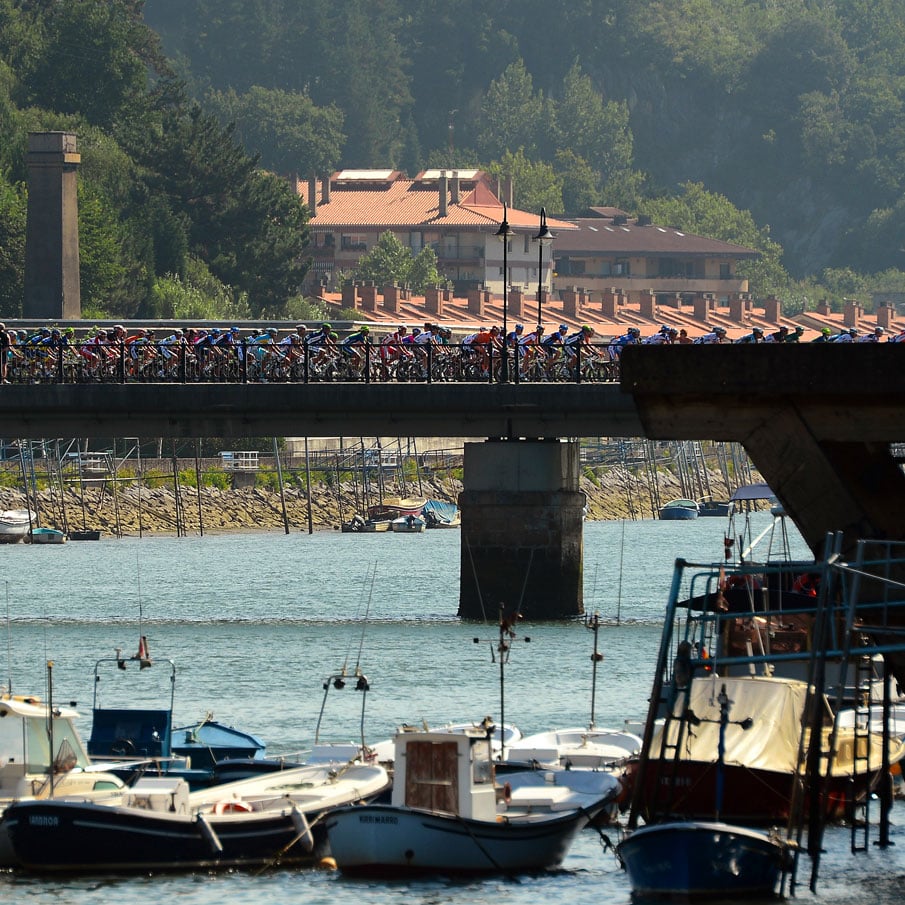
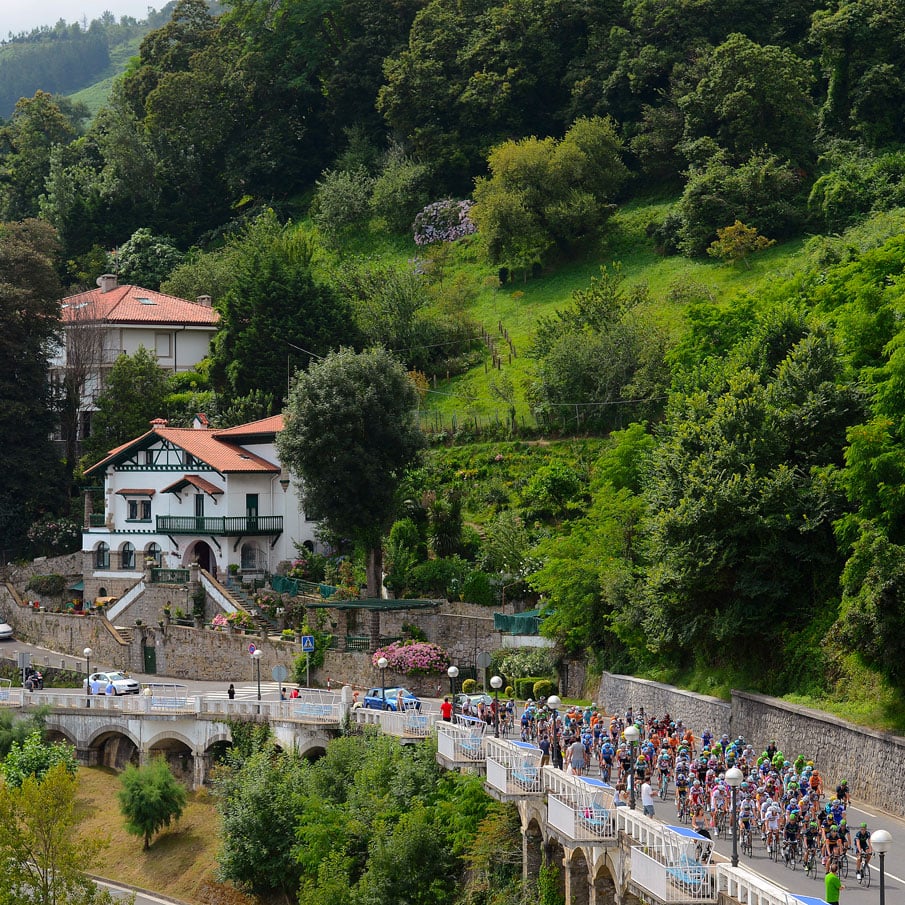
As in 2021, the 2022 edition will see riders tackle six climbs, including the traditional Jaizkibel (7.9 km at 5.6%) and the challenging Murgil-Tontorra stretch (2.1 km at 10.1 %), which will be at the top of the hill just eight kilometers from the finish and could therefore be decisive.
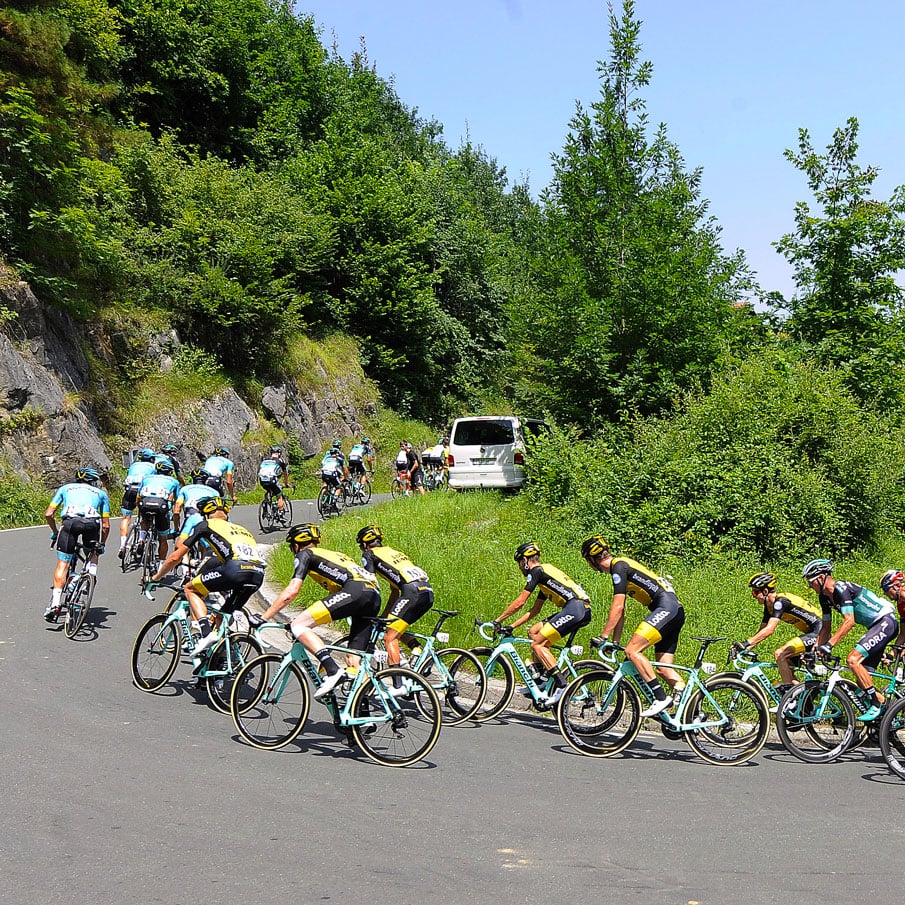
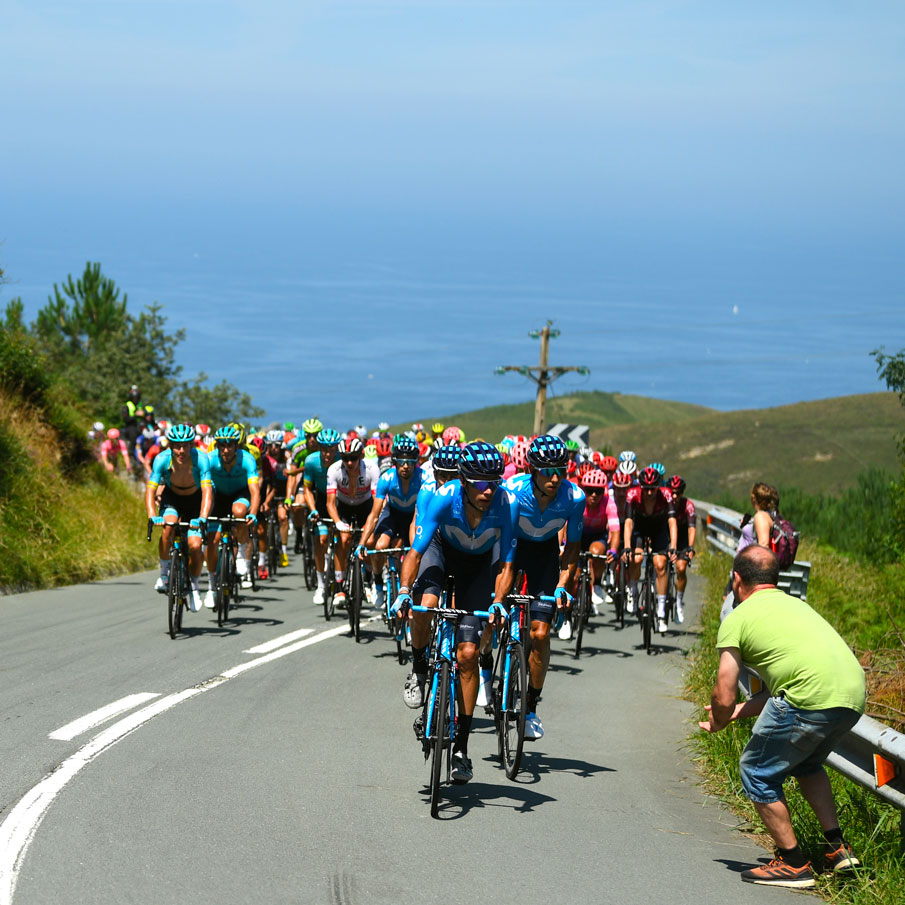
Despite the difficulty of the route, the San Sebastian Classic is an event much appreciated by the athletes for the variety of landscapes, between sea and hills, and for the breathtaking views it offers.
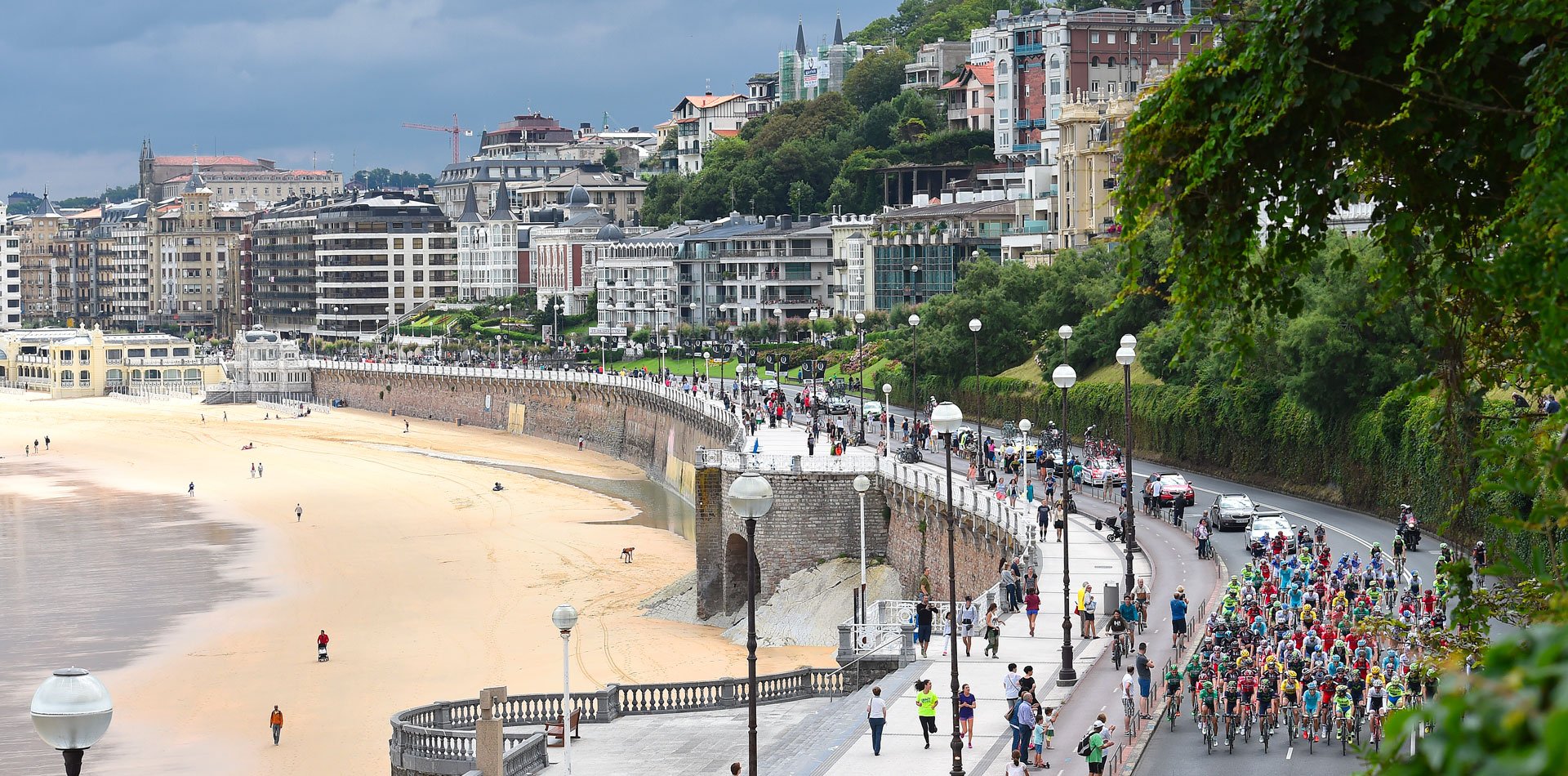
FOOTNOTES
Photos by Gettysport
Photos by Gettysport






